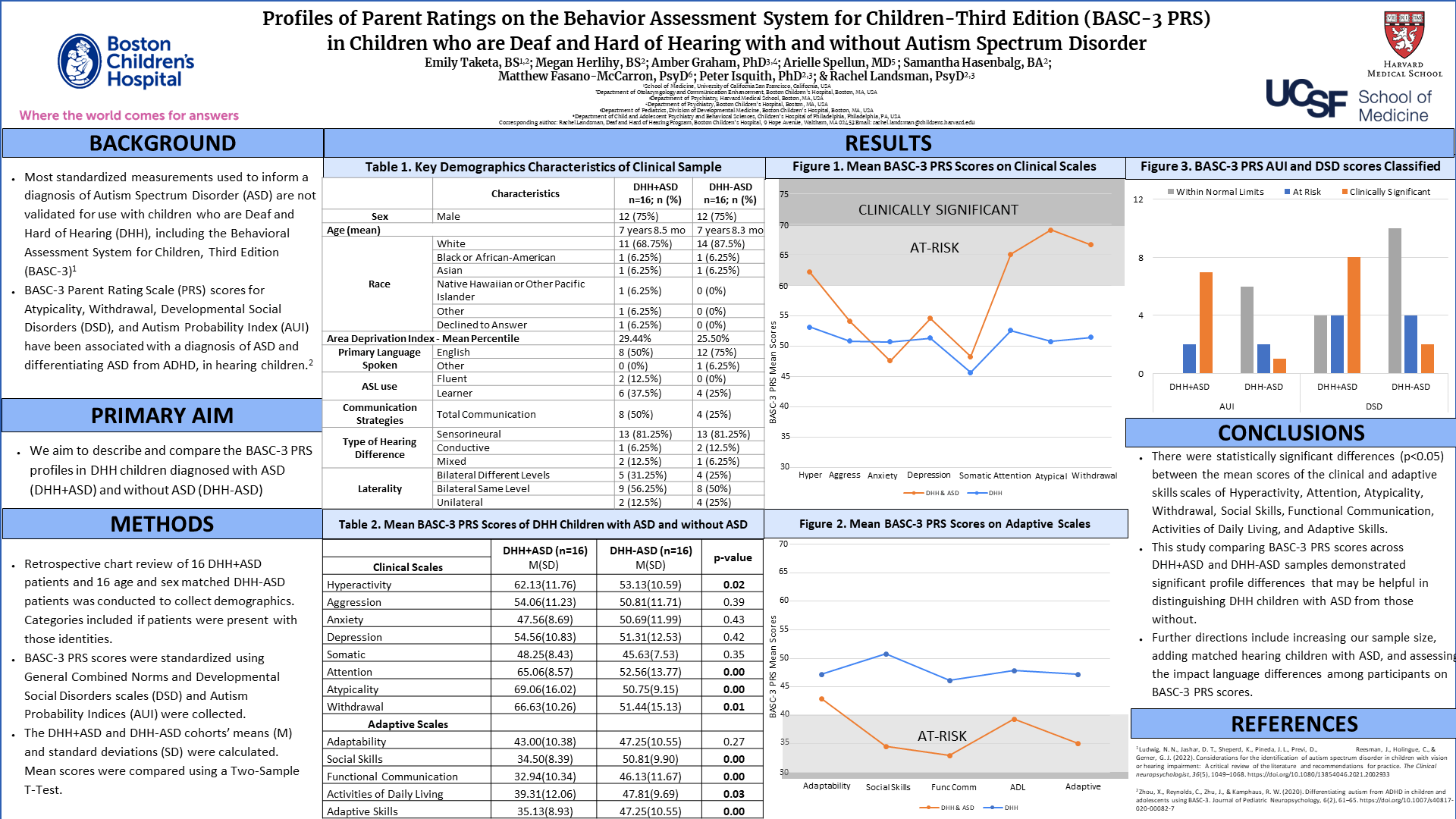Scientific Abstract
Background: Most standardized measurements used to inform a diagnosis of Autism Spectrum Disorder (ASD) are not validated for use with children who are Deaf and Hard of Hearing (DHH), including the Behavioral Assessment System for Children, Third Edition, Parent Rating Scale (BASC-3 PRS). We aim to describe a cohort of DHH children with and without ASD and compare BASC-3 PRS profiles to explore this measure’s utility in this population.
Methods: We conducted a retrospective chart review of 16 DHH patients diagnosed with ASD (DHH+ASD) and 16 age and sex matched DHH patients (DHH-ASD) who were seen in our multidisciplinary clinic. Collected demographics included age, sex, racial identities, average Area Deprivation Indices (a marker of SES), patient languages/communication strategies, and hearing loss characteristics. BASC-3 PRS scores were standardized using General Combined Norms. Developmental social disorders scales (DSD) and Autism probability indices (AUI) were collected. Mean scales for each cohort were compared with a Two-Sample T-Test.
Results: For DHH+ASD patients, mean BASC-3 PRS scores were elevated in the “at-risk” range for Hyperactivity (M=62(11), p=0.02), Attention (M=65(8), p<0.01), Atypicality (M=69(16), p<0.01), Withdrawal (M=66(10), p=0.01), Social Skills (M=34(8), p<0.01), Functional Communication (M=32(10), p<0.01), Activities of Daily Living (M=39(12), p=0.03), and overall Adaptive Skills (M=35(8), p<0.01). In the DHH-ASD cohort, mean BASC-3 scores on clinical and adaptive scales were within normal limits. There were statistically significant differences (p<0.05) from the above 8 clinical and adaptive scales mean scores between the DHH+ASD and DHH-ASD cohorts. DSD scores were clinically significant for 8 of 16 DHH+ASD and 2 of 16 DHH-ASD cases. AUI scores were clinically significant for 7 of 9 DHH+ASD and 1 of 9 DHH-ASD cases.
Conclusion: This study comparing DHH+ASD and DHH-ASD BASC-3 PRS scores demonstrated significant profile differences that may be helpful in distinguishing DHH children with ASD from those without. Further directions include increasing our sample size, adding matched hearing children with ASD, and assessing the impact of language differences.
Search posters

